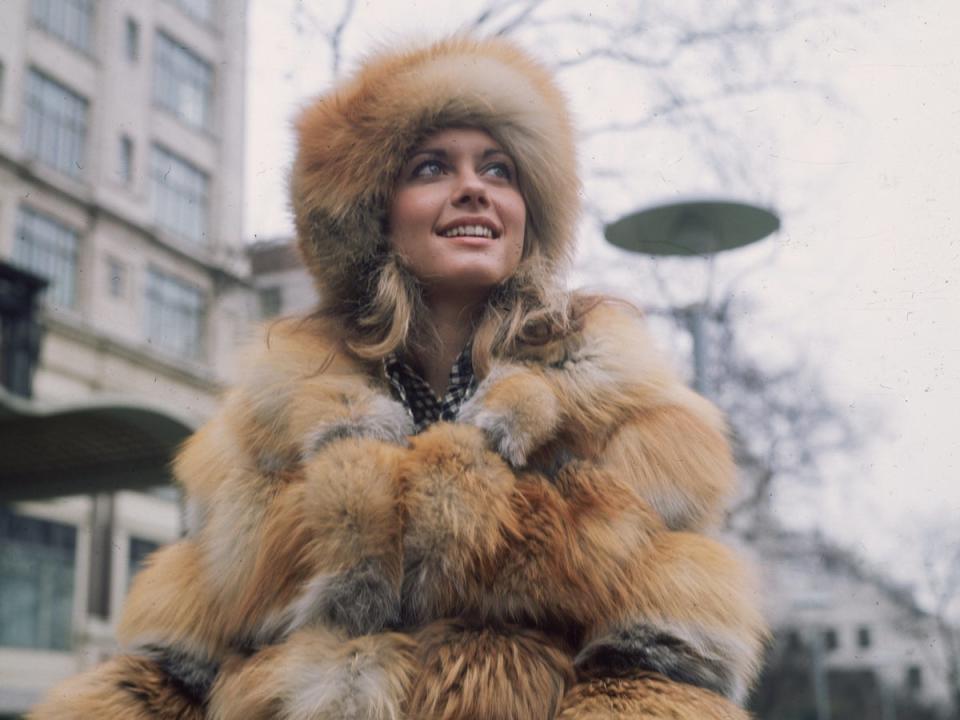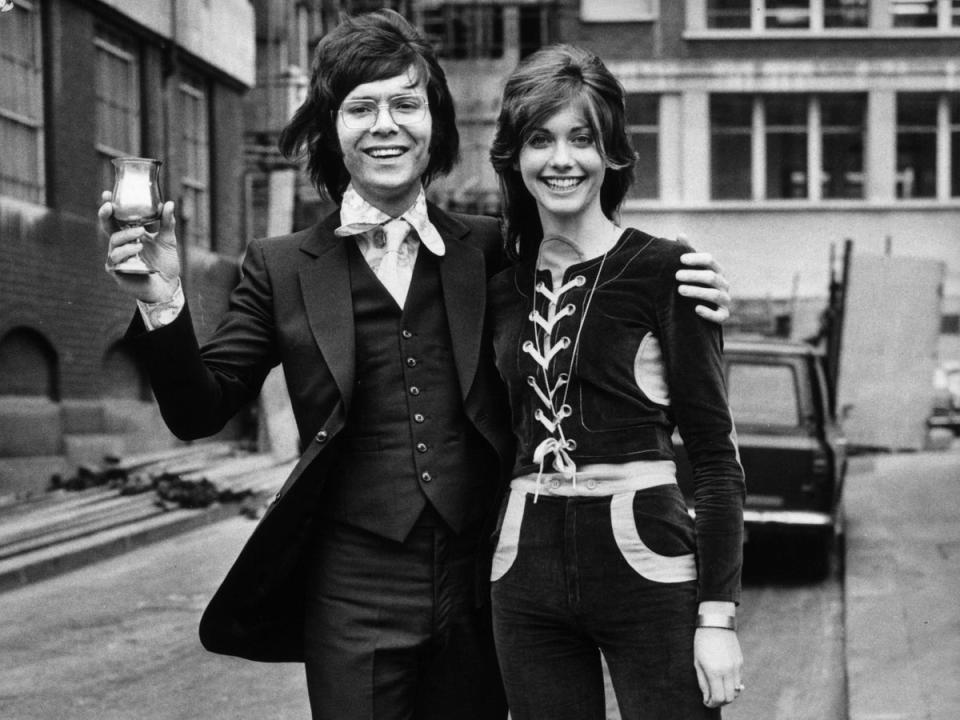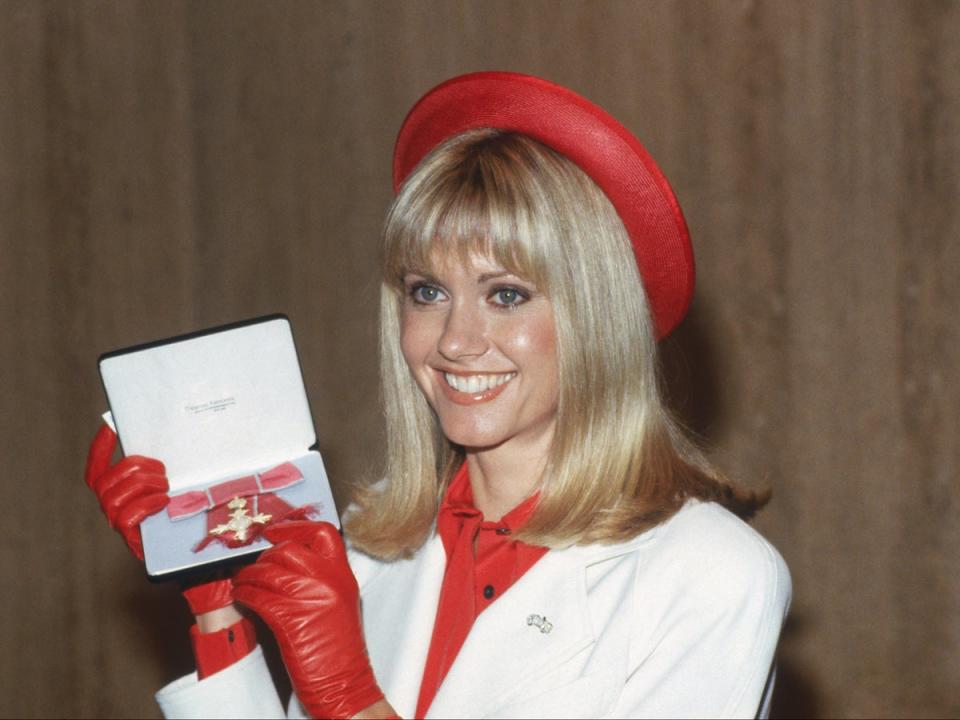There was more to Olivia Newton-John than just Grease

From the moment she appeared in the opening scene of Grease, running down the beach and kissing John Travolta while silhouetted by the setting sun, Olivia Newton-John was always going to be best remembered as Sandy Olsson. Released in June 1978, the film was an instant hit and quickly became the highest-grossing screen musical of its era. Newton-John’s performance of “Hopelessly Devoted To You” was nominated for an Oscar, while the image of her in blonde curls breathing: “Tell me about it, stud,” before stamping out her cigarette with a red high heel and launching into “You’re The One That I Want” seared itself into the popular imagination. You couldn’t want for a more defining vision of adolescent sexual awakening and teenage rebellion.
Yet there was much more to Newton-John, who has died from breast cancer at the age of 73, than her most iconic role. She was born in Cambridge on 26 September 1948. Her father Bryn Newton-John was an MI5 officer who worked on the Enigma project at Bletchley Park and took Nazi deputy Führer Rudolf Hess into custody during the Second World War. Her mother, Irene, was the daughter of Nobel Prize-winning physicist Max Born, who fled to Britain to escape the Nazi regime.
In 1954, when Newton-John was six, her family emigrated to Melbourne, Australia. She developed a love of performing while still a young teenager, and in 1965 appeared on the TV talent contest Sing, Sing, Sing with versions of Burt Bacharach’s “Anyone Who Had A Heart” and Stephen Sondheim’s “Everything’s Coming Up Roses”. She won the competition, receiving as her prize a trip to Britain.
It was in London that Newton-John recorded her debut single, “Till You Say You’ll Be Mine”, which was released to little fanfare in 1966. She had her first Top 10 hit in the UK five years later with a cover of Bob Dylan’s “If Not For You”, the title track from her debut album. That record saw Newton-John interpret a wide range of the country and folk songs that she loved, including Kris Kristofferson’s “Me and Bobby McGee”, The Band’s “In a Station” and Gordon Lightfoot’s “If You Could Read My Mind”.

Having made her name as a folk singer, Newton-John proved she was just as adept at pop when she was chosen to represent the UK at the Eurovision Song Contest in 1974. Her song “Long Live Love” was chosen for her by the British public and tipped for success, but she was ultimately bested at the contest in Brighton by ABBA’s unstoppable “Waterloo”. Later that year Newton-John released “I Honestly Love You”, which became her first Number One hit in the United States and, at least until Grease, her signature song.
When Grease came along in 1978, it catapulted Newton-John to superstardom at the same time as emboldening her to transform her image. Inspired by Sandy’s metamorphosis from straight-laced school girl to spandex-clad siren, Newton-John’s next album Totally Hot incorporated a rock’n’roll sound and she appeared on the cover dressed in black leather. The 1981 follow-up Physical was an ever bigger success, and its title track topped charts around the world. Released just months after the launch of MTV, Newton-John pioneered the emerging field of music television by recording a video for every song on the record and won a Grammy for her ground-breaking video album.

It was shortly after the release of greatest hits compilation Back to Basics in 1992 that Newton-John was first diagnosed with breast cancer. She received the news the same weekend her father died, and was forced to cancel all publicity for the album as well as an accompanying tour. She recovered, but the cancer returned in 2013 and then again in 2017.
Over the many years she spent dealing with the painful effects of her cancer and the associated surgery, chemo and radiotherapy, Newton-John became an enthusiastic advocate of medical cannabis. She was introduced to it by her husband, John Easterling, who grows the plant at their Californian ranch. Newton-John’s daughter Chloe Lattanzi also owns a cannabis farm in Oregon. In 2007, Easterling introduced Newton-John to the powerful psychedelic brew ayahuasca. They married in Cusco, Peru, the following year. “It did change my life,” Newton-John told The Guardian in 2020. “If I hadn’t had that experience, I might not be married to John now. I had the most incredible visions when I was under the influence of it. It was amazing.”
Through her psychedelic experiences, Newton-John found she was able to connect with important figures from her past. She wrote in her 2019 autobiography Don’t Stop Believin’ that she would call on late singers Karen Carpenter and John Denver to be her “spirit guides”. Both had been friends of hers before they died, and she found they would offer her reassurance before concerts.
In 2019, Newton-John told CBS News that she tried not to let her diagnosis or thoughts of death overwhelm her. “You have to think about it. I mean, it’s part of life,” she said. “But I try not to think about it too much. I try to mediate and be peaceful about it, and know that everyone I love is there, so there’s something to look forward to.”

 Yahoo Lifestyle
Yahoo Lifestyle 